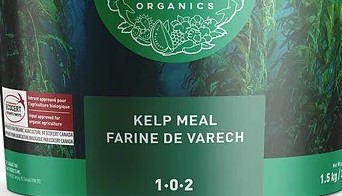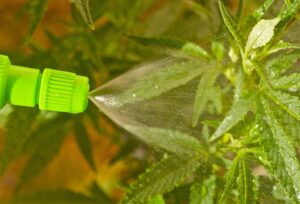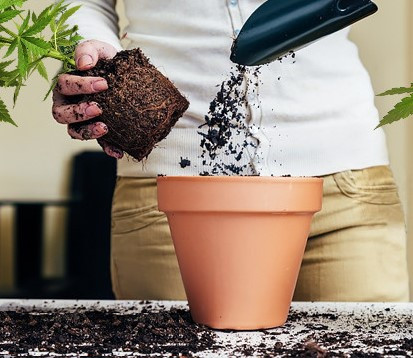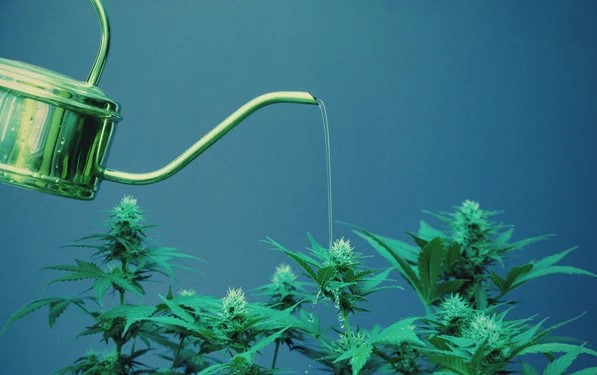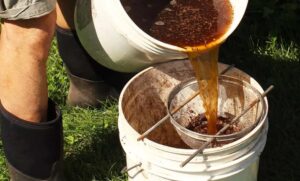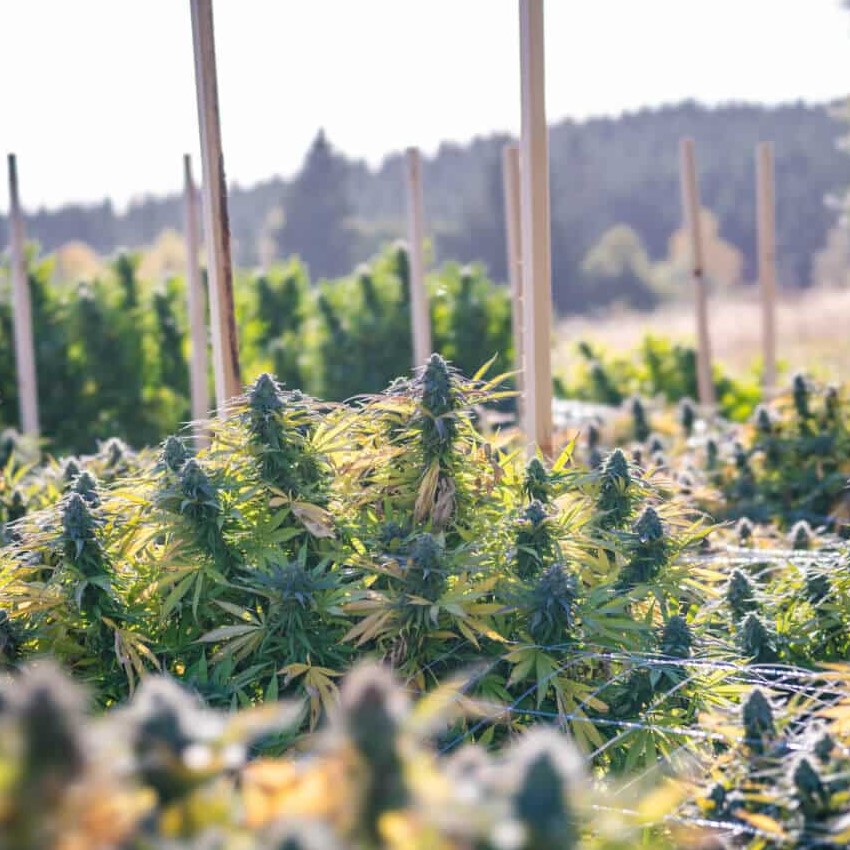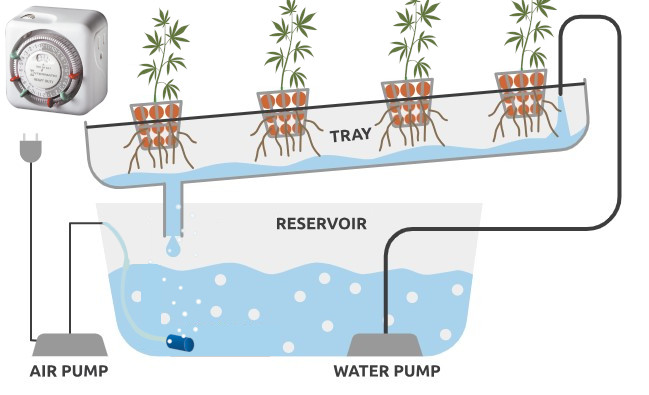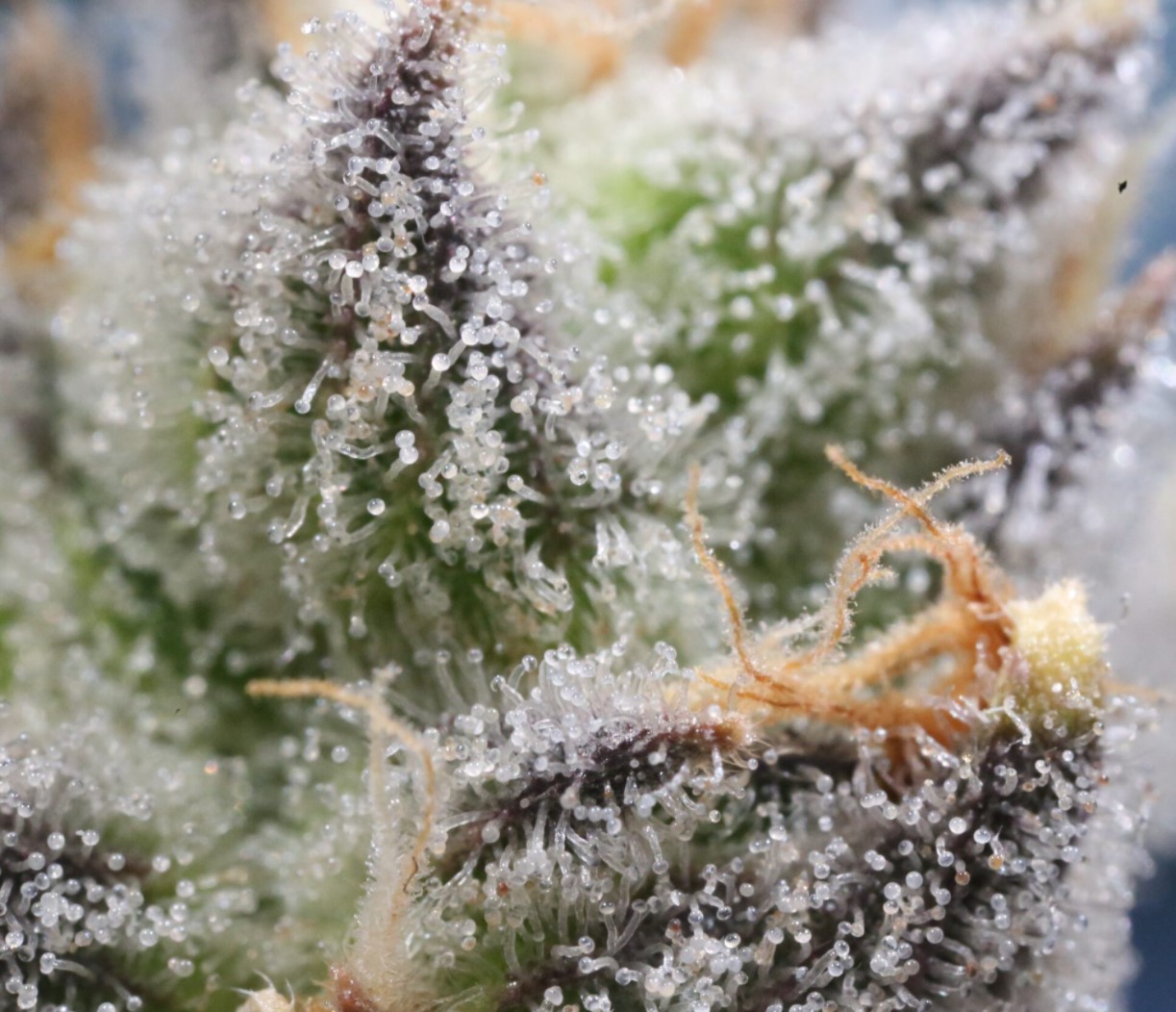Table of Contents
Introduction to Kelp in Cannabis Gardening
- What is kelp and why is it beneficial?
- Overview of kelp’s nutritional benefits for plants.
Choosing the Right Kelp Products
- Types of kelp products available (powder, liquid, meal).
- Factors to consider when selecting kelp for cannabis.
Methods of Applying Kelp
- Soil drenching: How to prepare and apply kelp tea.
- Foliar spraying: Techniques for using kelp extracts on leaves.
- Incorporating kelp into compost or soil mixes.
Benefits of Using Kelp in Cannabis Gardens
- Improved nutrient uptake and soil structure.
- Enhancing plant growth and vigor.
- Boosting resistance to pests and diseases.
Timing and Frequency of Kelp Application
- Best practices for applying kelp during different growth stages.
- How often should kelp be applied for optimal results?
Combining Kelp with Other Nutrients
- Synergies with organic fertilizers and amendments.
- Complementary nutrients for maximizing kelp’s effectiveness.
Potential Challenges and Considerations
- Possible issues with kelp application (e.g., overuse, salt content).
- How to mitigate risks and ensure proper application.
Introduction to Kelp in Cannabis Gardening
Kelp, a type of large seaweed found in shallow ocean waters, has emerged as a valuable tool for enhancing cannabis cultivation. Rich in essential nutrients, kelp offers a natural solution to promote robust plant growth and overall garden health.
What is Kelp and Why is it Beneficial?
Kelp is renowned for its high concentration of beneficial compounds such as micronutrients (including potassium, calcium, and magnesium), vitamins, amino acids, and growth hormones like cytokinins. These nutrients are readily absorbed by plants, aiding in photosynthesis, root development, and resilience against environmental stressors.
Overview of Kelp’s Nutritional Benefits for Plants
In cannabis gardening, kelp functions as a multifaceted supplement:
- Improved Nutrient Uptake: Kelp enhances the soil’s ability to retain moisture and nutrients, ensuring plants have access to essential elements throughout their growth cycle.
- Strengthened Plant Immunity: Its natural growth hormones bolster the plant’s defenses against pests and diseases, reducing the need for chemical interventions.
- Enhanced Yield and Quality: Regular application of kelp can lead to increased flower production, improved terpene profiles, and higher cannabinoid concentrations in harvested buds.
By integrating kelp into their gardening practices, cannabis enthusiasts can harness the power of these oceanic nutrients to cultivate healthier, more productive plants with minimal environmental impact.
Choosing the Right Kelp Products
When considering kelp products for your cannabis garden, understanding the different types available and key selection factors can significantly impact your plants’ health and yield.
Types of Kelp Products Available
- Powdered Kelp:
- Advantages: Easily soluble in water for use as a soil drench or foliar spray. Provides a concentrated dose of nutrients.
- Application: Can be mixed into soil or compost, or dissolved in water for direct application to plants.
- Liquid Kelp Extract:
- Advantages: Convenient and ready-to-use. Contains a balanced blend of nutrients and growth-promoting compounds.
- Application: Applied directly to the soil or as a foliar spray. Absorbed quickly by plants for immediate benefits.
- Kelp Meal:
- Advantages: Slow-release form of kelp nutrients. Improves soil structure over time and enhances microbial activity.
- Application: Mixed into soil or compost before planting to enrich the growing medium gradually.
Factors to Consider When Selecting Kelp for Cannabis
- Source and Quality: Choose products derived from sustainably harvested kelp to ensure purity and minimal environmental impact.
- Nutrient Content: Look for products with a balanced NPK ratio (Nitrogen, Phosphorus, Potassium) and additional micronutrients suitable for cannabis growth stages.
- Application Method: Consider your preferred application method (foliar spray, soil drench, incorporation into soil) and select a product that aligns with your gardening practices.
- Organic Certification: Opt for organic-certified kelp products to maintain organic gardening standards and avoid synthetic additives.
- Reviews and Recommendations: Seek feedback from other cannabis growers or gardening experts to gauge product effectiveness and suitability for cannabis cultivation.
Choosing the right kelp product involves evaluating these factors to ensure optimal nutrient uptake, plant health, and overall garden performance.
Methods of Applying Kelp in Cannabis Gardening
Kelp can be applied to cannabis plants through various methods, each offering distinct benefits in nutrient absorption and plant health promotion.
Soil Drenching: How to Prepare and Apply Kelp Tea
Soil drenching with kelp tea is a popular method to deliver nutrients directly to the root zone, promoting robust root development and overall plant vigor.
- Preparation:
- Ingredients: Use powdered or liquid kelp according to package instructions. Typically, 1-2 tablespoons of powdered kelp or 1-2 cups of liquid kelp per gallon of water is recommended.
- Brewing: Mix the kelp product into a bucket or container filled with water. Allow it to steep for several hours or overnight to extract nutrients effectively.
- Straining: Before application, strain the brewed kelp tea to remove any solid particles that could clog sprayers or irrigation systems.
- Application:
- Timing: Apply kelp tea during the plant’s vegetative growth phase or early flowering stage for optimal nutrient uptake.
- Method: Pour the prepared kelp tea directly onto the soil around the base of each cannabis plant, ensuring thorough coverage of the root zone.
- Frequency: Repeat soil drenching every 2-4 weeks throughout the growing season to sustain nutrient levels and support continuous plant growth.
Foliar Spraying: Techniques for Using Kelp Extracts on Leaves
Foliar spraying with kelp extracts provides a rapid nutrient boost and enhances plant resilience by reinforcing cell walls against environmental stressors.
- Preparation:
- Dilution: Mix liquid kelp extract with water according to product instructions. Typically, dilute 1-2 tablespoons of liquid kelp per gallon of water.
- Additives: Optionally, include a wetting agent (like a mild soap solution) to improve leaf coverage and nutrient absorption.
- Application:
- Timing: Apply kelp foliar spray during the cooler hours of the day (early morning or late afternoon) to minimize stress on plants.
- Coverage: Use a handheld sprayer to evenly coat both sides of cannabis leaves until they are lightly dripping with the solution.
- Frequency: Apply kelp foliar spray every 1-2 weeks, especially during periods of rapid growth or when plants exhibit signs of stress.
Incorporating Kelp into Compost or Soil Mixes
Incorporating kelp into compost or soil mixes enhances soil fertility, improves water retention, and provides a slow-release source of nutrients over time.
- Mixing into Compost:
- Process: Add powdered kelp or kelp meal to your compost pile or bin during the decomposition process. Ensure thorough mixing to distribute nutrients evenly.
- Benefits: Kelp enhances microbial activity in compost, speeding up decomposition and enriching the resulting compost with valuable nutrients.
- Blending with Soil:
- Preparation: Mix powdered or granular kelp into soil mixes before planting cannabis. Aim for a uniform distribution throughout the growing medium.
- Application: Incorporate kelp into potting soil or garden beds to improve soil structure, nutrient availability, and overall plant health.
By employing these methods—soil drenching, foliar spraying, and incorporation into soil or compost—you can effectively harness the nutritional benefits of kelp to optimize cannabis growth and maximize crop yields.
Benefits of Using Kelp in Cannabis Gardening
Integrating kelp into your cannabis gardening regimen offers a myriad of benefits that contribute to healthier plants and improved overall garden performance.
Improved Nutrient Uptake and Soil Structure
Kelp enriches the soil with a diverse array of essential nutrients, including potassium, calcium, magnesium, and trace minerals. These nutrients are readily absorbed by cannabis roots, enhancing nutrient uptake and promoting balanced growth. Furthermore, kelp’s natural polysaccharides help improve soil structure by increasing soil porosity and water retention capacity. This fosters better root development and nutrient availability throughout the growing season.
Enhancing Plant Growth and Vigor
The growth-promoting hormones, such as cytokinins and auxins, present in kelp extracts stimulate cell division and elongation in cannabis plants. This results in accelerated vegetative growth, robust stem and leaf development, and overall increased plant vigor. As a result, cannabis plants supplemented with kelp are often healthier, more resilient, and capable of reaching their full genetic potential in terms of size and biomass.
Boosting Resistance to Pests and Diseases
Kelp’s rich nutrient profile and hormone content also play a crucial role in bolstering cannabis plants’ natural defenses against pests and diseases. By strengthening cell walls and enhancing plant immunity, kelp helps reduce susceptibility to common cannabis pests such as aphids, spider mites, and fungal pathogens. This reduces the need for chemical pesticides and fungicides, promoting a more sustainable and eco-friendly approach to cannabis cultivation.
Incorporating kelp into your cannabis gardening practices not only enhances nutrient availability and soil health but also promotes vigorous plant growth while fortifying natural defenses against environmental stressors. These benefits collectively contribute to healthier, more resilient cannabis plants and ultimately improve the quality and yield of your harvest.
Timing and Frequency of Kelp Application
Applying kelp at the right times and frequencies is crucial to maximizing its benefits throughout the various growth stages of cannabis plants.
Best Practices for Applying Kelp During Different Growth Stages
- Seedling and Early Vegetative Stage:
- Application: Start with a diluted kelp solution (follow product instructions) applied as a soil drench or foliar spray once seedlings have established roots.
- Benefits: Enhances root development and early growth vigor, setting a strong foundation for healthy plants.
- Vegetative Growth Stage:
- Application: Continue with regular applications of kelp tea or foliar spray every 2-4 weeks.
- Benefits: Supports lush foliage growth, improves nutrient absorption, and prepares plants for flowering.
- Pre-Flowering and Flowering Stage:
- Application: Stop foliar spraying during early flowering and only feed as a soil drench from here forward.
- Benefits: Promotes flower formation, enhances terpene production, and supports overall plant health during the critical flowering phase.
How Often Should Kelp be Applied for Optimal Results?
- Regular Maintenance: Throughout the entire growth cycle, apply kelp consistently every 2-4 weeks to ensure a steady supply of nutrients and growth-promoting compounds.
- Critical Periods: Increase frequency during periods of rapid growth or stress, such as transplanting, heat waves, or heavy flowering, to support plant resilience and performance.
- Observation and Adjustment: Monitor plant response and adjust application frequency based on environmental conditions, growth rate, and nutrient needs observed in your cannabis garden.
By timing kelp applications to coincide with key growth stages and adjusting frequency based on plant response, you can harness the full potential of kelp to cultivate robust, healthy cannabis plants from seedling to harvest.
Combining Kelp with Other Nutrients
Kelp serves as a versatile supplement in cannabis gardening, offering a range of benefits that can be amplified when paired with other organic fertilizers and soil amendments. Understanding how to synergize kelp with complementary nutrients enhances its effectiveness and promotes healthier, more vigorous cannabis plants.
Synergies with Organic Fertilizers and Amendments
Organic fertilizers, such as compost, manure, and fish emulsions, complement kelp’s nutrient profile by providing additional macronutrients (nitrogen, phosphorus, potassium) and micronutrients essential for plant growth. When combined:
- Compost: Enhances soil structure and microbial activity, which in turn supports kelp’s nutrient uptake capabilities.
- Manure: Adds nitrogen for leaf and stem development, synergizing with kelp’s growth-promoting hormones.
- Fish Emulsions: Provides readily available nutrients like nitrogen and phosphorus, supporting overall plant health alongside kelp’s micronutrient enrichment.
Complementary Nutrients for Maximizing Kelp’s Effectiveness
Certain nutrients can enhance the specific benefits kelp offers to cannabis plants:
- Humic Acids: Improve soil structure and increase nutrient retention, helping plants utilize kelp’s nutrients more efficiently.
- Mycorrhizal Fungi: Facilitate nutrient absorption through symbiotic relationships with plant roots, complementing kelp’s role in enhancing root development and nutrient uptake.
- Calcium and Magnesium: Essential for cell wall formation and enzyme activation, ensuring plants maximize the use of kelp-derived nutrients for robust growth and stress resistance.
By combining kelp with these organic fertilizers and amendments, cannabis growers can create a balanced and nutrient-rich environment that supports optimal plant development throughout all stages of growth. Monitoring soil health and plant responses will help fine-tune nutrient applications, ensuring cannabis plants receive the full benefits of kelp supplementation.
Potential Challenges and Considerations
While kelp offers numerous benefits to cannabis plants, it’s essential for growers to be aware of potential challenges and adopt proper application practices to maximize its effectiveness without encountering adverse effects.
Overuse and Potential Issues with Salt Content
Overuse: Applying excessive amounts of kelp can lead to nutrient imbalances or salt buildup in the soil, potentially hindering plant growth rather than promoting it. Symptoms of overuse may include leaf burn, reduced water uptake, or stunted growth.
Salt Content: Some kelp products, especially those derived from seawater, can contain high levels of salts like sodium chloride. In regions with already saline soils, this can exacerbate soil salinity issues over time, affecting plant health and growth.
Troubleshooting Tips and Adjustment Practices
To mitigate these challenges and ensure effective kelp application:
- Soil Testing: Regularly test soil pH and nutrient levels to monitor for any imbalances or salt accumulation. Adjust kelp application rates accordingly based on soil test results to prevent overfertilization.
- Moderate Application: Follow recommended dosage guidelines provided by the kelp product manufacturer. Start with a lower application rate and gradually increase if needed, observing plant responses closely.
- Alternate Application Methods: Consider alternating between soil drenching and foliar spraying to diversify nutrient absorption pathways and minimize potential salt buildup in the root zone.
- Flush Soil: If salt accumulation is suspected, flush the soil with fresh water periodically to leach excess salts away from the root zone. Ensure proper drainage to prevent waterlogging.
- Select Low-Sodium Products: When choosing kelp products, opt for those with lower sodium content or derived from sources with naturally lower salt levels to reduce the risk of soil salinity issues.
By staying vigilant and adjusting kelp application practices based on plant and soil conditions, growers can harness the benefits of kelp while effectively managing potential challenges. Regular monitoring and proactive adjustments will help maintain a healthy growing environment conducive to robust cannabis growth and development.
How to Trellis Cannabis
Trellising cannabis is crucial for optimizing growth and maximizing yields. Learning how to trellis cannabis effectively helps support your plants,…
Force Flowering Cannabis Outdoors
What is Force Flowering? Force flowering is a cultivation technique used to induce cannabis plants to flower outside their natural growing…
Animals That Eat Cannabis Plants
Types of Animals That Eat Cannabis Plants Mammals Deer Rabbits Rodents (e.g., mice, rats) Insects Aphids Spider Mites Caterpillars Birds Pigeons Sparrows Other Wildlife Snails and Slugs Deterrents for Each Animal Group Mammals Fencing Repellents (e.g., sprays,…
NFT System for Cannabis Cultivation
Introduction Overview of Hydroponics Hydroponics is a method of growing plants without soil by using mineral nutrient solutions in an aqueous solvent….
Kelp in Cannabis Gardening
Table of Contents Introduction to Kelp in Cannabis Gardening What is kelp and why is it beneficial? Overview of kelp’s nutritional benefits for…
Harvest Your Cannabis Early Or Late? Which is Better
Harvesting cannabis at the right time is crucial to ensuring the best yield and quality. A well-timed harvest can make…


